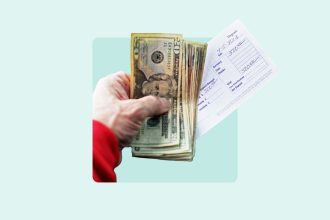Key takeaways
- A substantial drop in mortgage rates would create a bigger impact than a drop in home prices for the typical buyer.
- Mortgage rates are expected to decline between now and the end of 2026, while home prices will likely continue to appreciate — albeit at a much slower pace than the past few years — throughout most of the country.
- Waiting for rates to drop may be a losing game since a decline may motivate loads of other buyers to start searching, too.
If you’re thinking about buying a house in 2025, you’re likely hoping for some kind of relief to make the purchase feel a bit easier on your bank account. Eighty-three percent of U.S. adults who don’t own a home but want to point to issues with money — primarily not having enough income, home prices being too high and/or not being able to afford a down payment — as the driving reason for continuing to rent, according to Bankrate’s latest Home Affordability Report.
So, what’s on the horizon? Will mortgage rates that have been hovering in the 6.5 to 7 percent range begin to fall? Will home prices drop, too? Read on to learn about what’s in store for the housing market and what might make buying a home a bit easier.
Home prices vs. mortgage rates — which one matters more?
When comparing home prices and mortgage rates, it’s easy to focus on the listing amount since that’s the number you see first. However, the mortgage rate you lock in ultimately matters more since you could be paying off the loan for the next 30 years.
Let’s look at some math based on the median price of a home in the U.S. — $422,400 in July 2025, according to the National Association of Realtors.
| Home price | Down payment | Interest rate | Monthly payment |
| $422,400 | $84,480 | 6.5 | $2,135.88 |
| $422,400 | $84,480 | 6 | $2,026 |
| $418,176 | $83,635 | 6.5 | $2,114.53 |
| Monthly payment calculations are based on a 30-year fixed-rate mortgage and only include principal and interest. | |||
In the example above, buying a house with a mortgage rate that is one-half point lower translates to a monthly payment that is $109 lower. Meanwhile, a 1 percent decrease in the price of the home ($4,224) only saves around $21 per month.
Shop smarter for mortgage rates
Bankrate connects you to the latest lender offers, tailored to you. Find your low rate today.
Explore mortgage rates
Now, let’s look at a more dramatic decrease in both rates and prices:
| Home price | Down payment | Interest rate | Monthly payment |
| $400,000 | $80,000 | 6.5 | $2,022.62 |
| $422,400 | $84,480 | 5.5 | $1,918.67 |
Even if the median price of a home dropped by more than 5 percent, the monthly payment would still be over $100 more expensive compared to buying at the current median price with a mortgage rate that’s a full percentage point lower.
Are rates going to drop?
The good news: Mortgage rates have already fallen. Bankrate’s mortgage rate data shows that, after starting the year above the 7 percent mark, 30-year mortgage rate averages were closer to 6.64 percent in August. The better news: They’ll likely fall even further.
“Almost every mortgage forecast predicts that mortgage rates will fall between now and the end of this year, then continue through next year,” says Darren Tooley, senior loan officer at Cornerstone Financial Services in Michigan.
However, Tooley points out that there is no clear consensus on how far or fast those rates will drop. Fannie Mae’s latest forecast expects 30-year mortgage rates to end 2026 at 6.1 percent. The Mortgage Bankers Association, on the other hand, predicts a more modest drop with mortgage rates staying at 6.5 percent for all of next year.
While declining rates can lower your borrowing costs, they can create a challenge, too.
“I believe that as we see rates come down further, the move will get the attention of the public at-large and reignite interest in real estate,” says Evan Luchaco, a home loan specialist with Churchill Mortgage. “With growing interest comes great demand, which inevitably leads toward competition and increasing home prices.”
Could prices drop soon, too?
Prices aren’t quite as simple. Historically, home values go up over time except in unprecedented scenarios and times of economic uncertainty, like the 2008 housing crisis. And while Zillow’s most recent forecast calls for home values to close the year 0.9 percent lower, the story will look different around the country.
“We have seen record increases in home values over the past five years, but some have exploded way beyond their affordability ceiling,” Tooley says. “In these boom markets, the payment shock has thinned demand, so, logically, value will be flat or even falling for a short period of time.”
There are plenty of places where prices have already seen modest declines. In Jacksonville, Florida, for example, the median home price declined 2.3 percent year-over-year in July, according to Redfin. In Atlanta, the median sale price dropped 8.8 percent over the last year, per Redfin.
If you feel financially prepared to begin looking at homes, talk to a real estate agent to get a sense of the pulse in the area. Agents have a good idea of whether sellers have been more willing to negotiate with buyers, and they can inform you if more properties have been seeing reductions in list price.
Learn more: When are home prices going to fall — and how far?
Why is housing so unaffordable right now?
What affects housing affordability? The biggest factor is one of the foundational principles of economics: supply and demand. Based on a recent Zillow analysis, the U.S. has a housing shortage of 4.7 million units. More people want homes than are available, which naturally drives up the price. However, the housing shortage has been around for a while. Other critical pieces of the housing affordability puzzle include:
- The pandemic: Sure, the pandemic may be over, but the record-low rates fueled a surge in prices in many parts of the country. From the second quarter of 2020 to the end of 2022, the median sale price rose nearly 40 percent, according to data from the U.S. Census Bureau and U.S. Department of Housing and Urban Development.
- Inflation: While the Federal Reserve doesn’t directly set mortgage rates, its policy does have a tremendous impact on borrowing costs. Since the Fed has been working to tame inflation, rates have been higher. So, homebuyers are dealing with high listing prices coupled with high mortgage rates.
- Sluggish wage growth: While just about everything — including housing — costs more, people aren’t seeing their take-home pay increase at the same pace. The most recent analysis from the U.S. Bureau of Labor Statistics shows that workers saw an increase of 1.4 percent in their average weekly earnings.
The income needed to afford a home in more than half the country has increased by 50 percent since early 2020, according to Bankrate’s Housing Affordability Study. That’s tough to square with relatively modest increases in income for most workers.
Learn more: How do interest rates affect home prices and the housing market?
How much should I spend on a home?
Affording a home requires a budget. Before you begin looking at listings, consider the 28/36 rule in guiding your math. Most experts agree that you should aim to spend no more than 28 percent of your monthly income on your housing costs, which include principal and interest and other expenses like property taxes and homeowners insurance. With that in mind, if you earn $7,000 per month, your housing costs should be $1,960 per month or less.
The “36” in the equation represents the total percentage of your income that should go toward all your debts, such as your mortgage, car payment and student loans.
How can I make owning a home more affordable?
If you’re trying to figure out whether to buy a house or wait, it’s often wiser to wait if you’re worried about stretching yourself thin financially. While you’re working to build a budget that feels more comfortable, consider these tips:
- Boost your credit as much as possible: Instead of focusing on hitting the minimum credit score to qualify for a mortgage, aim as high as possible. Lenders tend to reserve the lowest interest rates — which are going to save you the most money — for borrowers with excellent credit. The closer you can get to 780 or above, the better off you’ll be.
- Look for down payment assistance programs: If you’re a first-time homebuyer, there are quite a few options that are designed to help you come up with the upfront funds you need. If you can eliminate the worries of saving more for a down payment, you may be able to focus on the first tip even more by allocating a greater chunk of your income to pay off credit cards or other debts.
- Cast a wide net with your search: In addition to your own finances, think carefully about what you really need in a home. Condos and townhomes are often much smaller than single-family homes, but they tend to have much lower listing prices, too. Additionally, consider whether you’re open to dealing with a fixer-upper. While you may need to make some updates, the entry price point can be much better for a tight budget.
FAQs
Why we ask for feedback
Your feedback helps us improve our content and services. It takes less than a minute to
complete.
Your responses are anonymous and will only be used for improving our website.
Help us improve our content
Read the full article here














